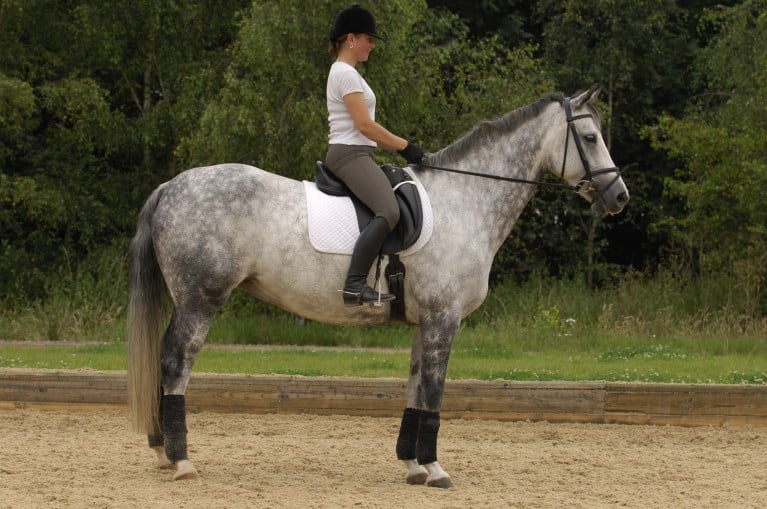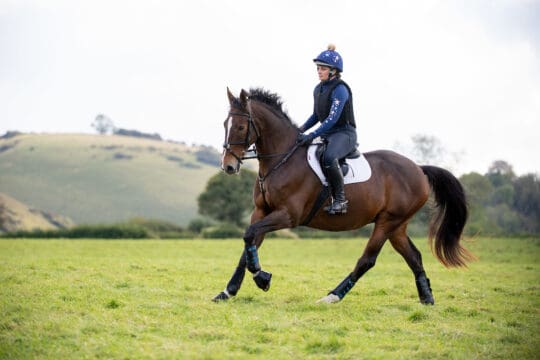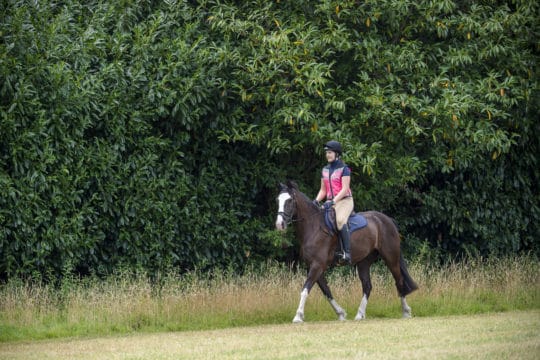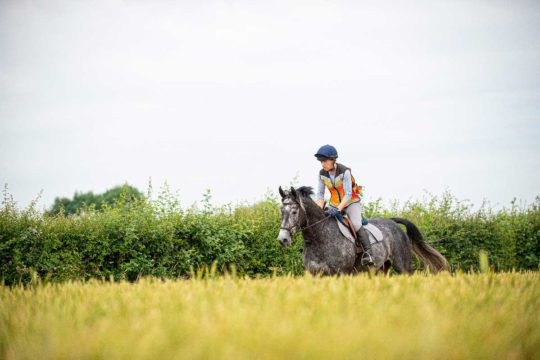It takes two to make a great partnership, and fine-tuning your riding will help fine-tune your horse. Here’s how pilates can help

If you work in an office and spend most of your day sitting at a computer, then your back can suffer as a result, and you may feel stiff when you get up to leave at the end of the day. This doesn’t help if you are going straight from work to ride your horse!
What is pilates?
It’s a form of exercise developed by Joseph Pilates. Its aim is to emphasise the balanced development of the body through core endurance, flexibility and awareness, in order to support efficient, graceful movement and increase spinal stability.
 Our experts
Our experts
Hannah (left) BSc (Hons) Ost. D. O. graduated from the European School of Osteopathy, then attended a postgraduate course for Veterinary Osteopathy. Since then, she’s been working with large and small animals, and teaches, too. Hannah has ridden for 22 years and has competed in most disciplines.
Rachael Faulkner (right) represented Canada in the 1992 Olympic Games in Barcelona, as a member of the three-day eventing team. She is also a level 2 pilates instructor, and has a yard of competition and young horses based in Surrey.
 Belinda Buttery (left) is co-director of Pilates Training Solutions Ltd with Claire (right). Belinda has a Masters degree in Exercise Science and completed her Practitioner and Master Practitioner in NLP certificates. She has also achieved Milton Eriksonian Hypnotherapy and Life Coaching Certificates, too.
Belinda Buttery (left) is co-director of Pilates Training Solutions Ltd with Claire (right). Belinda has a Masters degree in Exercise Science and completed her Practitioner and Master Practitioner in NLP certificates. She has also achieved Milton Eriksonian Hypnotherapy and Life Coaching Certificates, too.
Claire Worman has been involved in the health and fitness industry for the last 15 years as a freelance instructor and trainer, college lecturer and assessor, and verifier for the NVQ/OCR awards and VTCT Therapy qualifications. She is a registered osteopath and is currently writing a book encompassing a more holistic approach to pilates.
 The spotlight is on…
The spotlight is on…
Andrea has owned seven-year-old Hanoverian, Fritz for a year and they are competing at Elementary level in dressage. Andrea suffered two disc prolapses several years ago, and had a year off riding as a result of this.
During this time, she went to the gym and worked on getting her back stronger, so that she would be able to ride again. Now, Andrea is back riding, but she has to be very careful and take good care of her back.
“I have to watch which horses I ride, as some seem to upset my back more than others, and I find the worst thing is when horses whip round. Luckily, Fritz doesn’t do that too often! I do regular exercises to keep my back strong, so I’d love to see what these experts can recommend, too.”
Andrea’s day involves computer work, and she told us: “I am often lame when I leave work, and even more lame when I get off my horse!”
Here’s what our experts found when they watched Andrea ride Fritz. And more importantly, read on to find out how pilates can not only help your riding, but keep your back strong enough for the saddle, too – whether or not you’ve ever had back trouble.
Ground control
“It’s important to watch both horse and rider on the ground first,” said Hannah, “so that you can see whether the horse is affecting the rider the most, or vice versa. As an example, try to catch yourself next time you’re standing chatting to a friend. If you find that you rest with more weight on one leg, then you’re likely to ride with more weight in the stirrup on that side, too, which will make you crooked in the saddle. And to assess the horse, we would watch him being trotted up to see which side he favours and how that might have an effect on the rider.”
 Assessing Andrea
Assessing Andrea
Andrea is a good rider, and she has successfully trained horses up to Medium level dressage. However, her ongoing back problem has caused her to have breaks from riding and due to the pain she has experienced in the past, Andrea ‘guards’ her back when she rides, which doesn’t allow her to always ride to her full potential.
Andrea tends to curve her body to the left, which makes her hip drop to the right. This causes her left leg to draw up, making it less effective, so she uses more left rein instead. Having less weight in her left stirrup and more in her right will affect Fritz, too.
“It will make it harder for him to step through with his right hind,” said Rachael, “which is exactly what we are seeing.”
If all this sounds rather critical, then it is worth noting that there probably isn’t a rider in the world who doesn’t have faults. And luckily, this is where Equilates can help. A term given to the idea of using pilates to improve your riding, pilates improves the recruitment of the correct core muscles prior to movement, helping to stabilise the spine for riding effectively.
Rachael explained that Andrea needs to be more stable, yet flexible, through her seat and back: “The key to effective riding is a straight and stable seat. Without this, we tend to rely on our legs and arms to balance. By creating core endurance, this stablises the spine, making our seat stronger and more stable. This allows our legs and hands to work independently. With this, Andrea will find it easier to keep her weight even through her seat bones, and her legs and arms more relaxed and effective.
“Andrea has a back injury that makes this more of a challenge for her than most riders. She is doing a wonderful job of producing this horse, and I am sure that with the help of Equilates, their training will find new levels.”

Target area
Tucking your pelvis too far underneath your body will give you a less effective position. Tucking the pelvis too far underneath you will also make your lower leg push forward.
Similarly, riders who hollow their back will be less stable in the saddle. What you’re aiming for is somewhere in the middle!
Sit straight
When you ride, it’s likely that everything will be easier on one rein – rarely do you come across a horse and rider combination who can do everything equally on each rein, although you aim towards this as you go up the levels. Unevenness can be in the horse, the rider or most often a combination of both, and the important thing is to find out who is influencing who.
In leg-yield, Andrea’s tilt becomes more exaggerated. You can see quite clearly how her left leg draws up, making it ineffective and her weight shifts to the right. Her seat is not straight and stable, and she is relying on her hands for balance. Fritz will find it hard to step through from behind and take the contact forward, causing irregularity in the rhythm and balance.
Exercise plan
Here are some exercises riders can use to bring the body back to alignment and joint neutral:
- Arm opening exercises will work external obliques in the abdomen, while side bends, especially to the left will work quadritus luborum and obliques

- ‘Side bend’ to the left to work quadratus lumborum and obliques
- Neck press to work gluteals and improve upper spinal mobility
Andrea is going to work with Belinda and Claire, and follow their exercise plan. Stay tuned to Horse&Rider Magazine for updates on their progress, and how pilates can help you build perfect posture in the saddle, too!

















